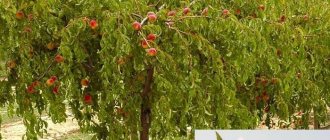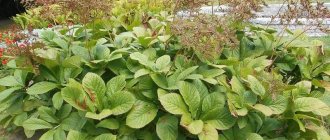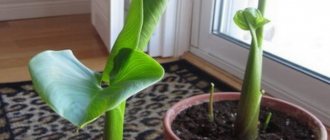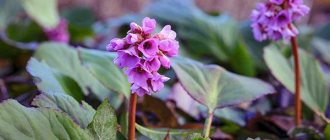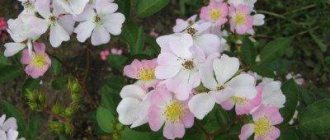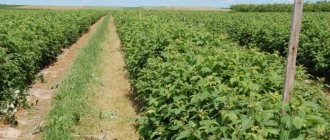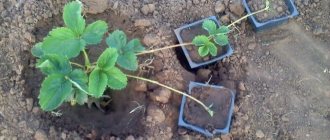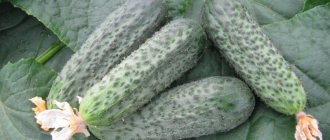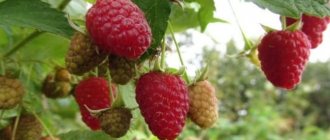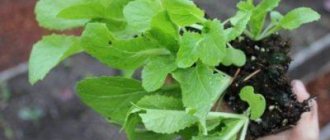Raspberries crossed with strawberries: description
Gardeners have long been tormented by the question of whether it is possible to cross raspberries and strawberries. We will probably be disappointed, but it is not yet possible to cross grass and shrubs. In fact, this is still a rare raspberry variety in our country. This raspberry-strawberry is called differently: Tibetan raspberry, Strawberry, Roseleaf, Chinese, Raspberry, Zemmalina, Himalayan raspberry, Club raspberry.
Roseleaf raspberry (Raspberry)
Malinika shoots are green in color with a large number of spines on the surface. The leaves are light green in color with yellow leaflets and serrated edges. In appearance, the leaves have a significant resemblance to the leaves of roses, which is why one of the names is Roseleaf Raspberry. The inflorescences are white, quite large and consist of five petals. Flowering occurs from mid-summer until the first autumn frosts. The calyxes have a dark yellow and brown core. The berries are scarlet in color and have a strawberry aroma.
The taste of the Tibetan raspberry pulp is slightly sour and resembles strawberries with a raspberry tint. In appearance, the fruits are similar to large strawberries. But the seeds in the berries, in appearance, look like raspberry drupes. The shoot forms 1-5 berries. The average weight of one fruit is 3-5 g. The first harvest ripens in mid-August and continues until autumn frosts.
Characteristics of the berry
The shrub has thorny shoots. It is fluffy and low: usually reaches 30-50 cm. The leaves are bright green, with clear veins. The fruits consist of tiny segments, so it seems that the berries are made of shiny beads.
Experienced gardeners note that berries:
- bright red;
- large;
- juicy;
- unsweetened, with sourness.
Interesting! Brings a rich harvest. One branch can produce up to 5 berries. They make jam, prepare wine and add them to compotes.
How “raspberries crossed with strawberries” survive the winter
In order for the plant to overwinter normally, it is necessary to regularly remove all root shoots throughout the summer and autumn. In addition, in the fall it is necessary to prune the bush, removing the entire above-ground part. After this, the location of the root system should be covered with loose soil.
Usually the plant does not need additional insulation for the winter. But if a harsh winter is expected, such measures still need to be carried out. For this purpose, the soil surface where the root system is located is covered with straw, hay or spruce branches. The thickness of such a layer should be at least 20 cm. You can install metal arcs and cover the top with several layers of dense agrofibre (SUF-20 brand).
Cultivation: planting and propagation
This variety is planted just like regular raspberries. The place for the beds is chosen mainly on the south side; the plant is quite unpretentious and can grow both in areas exposed to the sun and in partial shade. The bushes are planted in pre-made holes, between which there should be a very large distance : 70-100 cm. Row spacing should be at least 1.5 meters.
The yield of a hybrid of strawberries and raspberries depends on the soil
This beauty grows on any soil, but the yield will be greater if you still plant it in fertile and loose soil. You can fertilize the holes with peat or organic fertilizer before planting .
The plant is planted either in spring or early autumn.
If you plant raspberries in the fall, you need to do this at the end of August - the first half of September so that the plant has time to take root before the first frost.
This decorative variety of raspberries reproduces by root shoots , of which it produces quite a lot per season. This feature should be taken into account when planting. To plant a new plant, you just need to carefully dig it up and root it in the right place.
How to plant Chinese raspberries
It is very important to plant such raspberries correctly so that the planted plants quickly take root and begin to develop intensively. To do this, you need to follow the recommendations that determine what work should be performed.
Landing rules
First of all, you need to start by choosing a location. Try to ensure that the soil for raspberries and strawberries is fertile and of medium density. For these parameters, chernozems are best suited. Then, you need to prepare planting holes that are 25 cm wide and 15 cm deep. 0.5 kg is added to these holes. rotted manure and mixed with soil, pour 3-5 liters. water.
After absorbing the water, you can proceed directly to planting the seedlings. For this purpose, lateral branches from the mother plant are best suited, which are carefully separated from the main bush and transplanted to a new growing location. Planting material is placed in the center of the hole, and the roots are sprinkled with a fertile layer.
Landing dates
It is best to plant Raspberry during September-October. It is during this period that young plants quickly take root and begin to develop intensively with the onset of spring. If early frosts are expected after planting, the plant should be covered with film or agrofibre on top. Later planting may cause freezing or complete death of young seedlings during the winter period.
Landing Features
In order for young plants to quickly take root, they must be planted on the south side of the garden plot. Planting should be done in even rows or individual bushes.
To avoid mutual oppression in the future, it is necessary to strictly adhere to the planting scheme. So, when growing in rows, it is necessary that the row spacing be at least 140-150 cm wide and the distance between adjacent bushes in the row should be 70-80 cm.
4-5 kg are poured into the prepared trench. rotted manure and 200 g of superphosphate per 1 linear meter. The applied fertilizers are thoroughly mixed with the soil and filled with water at a rate of 20-24 liters. per 1 linear meter. After this, the plants are planted in the trench according to the recommended planting pattern. The root system is covered with fertile soil. To reduce the evaporation of moisture from the soil, it is recommended to mulch the rows and rows with straw or hay. It is not recommended to use sunflower husks as a mulching material, as this material changes the acidity of the soil.
Landing
The shrub is planted in the usual way for garden raspberries. Grows from 50 cm to 1.5 meters. The unusual raspberry has large and very sharp thorns. Therefore, planting this prickly plant must be done with thick gloves.
In temperate zones, it is preferable to plant Tibetan raspberries on the south and sunny side of the site. In areas with dry and hot climates, the plant does well in partial shade. Raspberries can be planted either in individual bushes or in rows, following the basic planting rules.
Rules for planting raspberries and strawberries:
- Before planting, it is necessary to dig small trenches (when planting in rows) or holes (when planting in bushes).
- When planting, strictly observe the distance: between bushes - 0.8 m, between rows - 1.5 m.
- It is recommended to add fertilizer to the holes or trenches in the form of a mixture of 1 bucket of peat and 0.5 buckets of rotted manure.
- After planting, water thoroughly.
- To make it easier for raspberries to take root and not get sick, it is better to plant them in the fall, before frost (from September to October).
- To transplant or when propagating your own bushes, proceed as follows: carefully dig up the shoot with a lump of earth and carefully move it to the desired place.
- When choosing a place for this plant, find one where the abundant root growth will not harm other garden pets. Also keep in mind that the shrub does not like constantly wet places.
- If necessary, it is possible to limit the growth of raspberries in some ways: for example, slate sheets dug around the perimeter.
- At the first serious frost, you need to hill up the young seedlings by covering their root system 30 cm with soil.
Caring for Malinika
After planting is completed, a period of caring for young plants begins. The intensity of plant development and the volume of harvest depends on the correctness of these activities.
Watering
It is very important to water in a timely manner and using the optimal amount of water. In spring, raspberries need to be watered every 3 days. The watering rate should be at least 10-16 liters. per 1 m2. When summer comes, the irrigation rate is reduced to 10 liters. per 1 m2, but watering must be carried out daily, in the evening. To reduce moisture evaporation, when the soil surface dries 1-2 cm, it is necessary to loosen it to create a mulch layer. If the soil surface already has a mulch layer created with straw and hay, then loosening is not necessary.
Fertilizers
In addition to applying fertilizers to the planting trench, it is necessary to carry out at least 4 fertilizing throughout the season.
“Raspberry crossed with strawberry” (Tibetan raspberry) needs feeding
- The first feeding is carried out in early spring using ammonium nitrate. As soon as the snow has melted and the soil is still quite moist, it is necessary to evenly scatter the above-mentioned fertilizer at the rate of 30-40 g per 1 m2.
- Next, in the first ten days of May, you need to fertilize the plants with a solution of fermented bird droppings. For this, take 1 liter. litter and dissolves in 12-13 l. water. The resulting solution is evenly poured along the row spacing at the rate of 3-4 liters. per 1 m2.
- Before flowering, the above-ground mass should be sprayed with liquid complex fertilizers Vympel (12-14 ml per 12 liters of water) or Energen Aqua (14-16 ml per 10 liters of water).
- At the end of September, it is recommended to feed the bushes with a solution of liquid mullein, which is prepared in a ratio of 1:12. The consumption rate of this solution is 6-7 liters. per 1 m2.
Pruning Clubraspberries
Without proper and timely pruning, it is impossible to obtain a significant harvest. Pruning should be carried out in several stages throughout the entire growing period.
It is necessary to promptly remove dry and diseased shoots. To prevent the bushes from thickening, it is necessary to promptly remove excess and highly developed shoots.
It is very important to collect rotting berries in time and remove them from the site.
How to care for culture
In dry climates, regular watering is necessary. In rainy summers, sand is sprinkled around the bushes, but the roots are not touched.
To prevent drying out, make mulch from:
- peat;
- compost;
- humus.
Important! Bush plantings especially require this measure. Mulch prevents weeds and drying out of the soil.
Weeding is done by hand because the root system is close to the surface.
Feeding is required in the spring. From mineral fertilizers with 5 tbsp. l., for each bush. You can use liquid manure 1:20 l. water.
Reproduction is carried out by root shoots.
Disease and pest control
The greatest damage to the plant is caused by pests such as spider mites, raspberry glass beetles, raspberry beetles and raspberry-strawberry weevils.
Spider mites settle on the hybrid in extreme heat, feeding on cell sap. The presence of the pest can be detected by white spots on the leaves and the presence of white cobwebs. To destroy this pest, it is necessary to carry out timely spraying with the insecticides Actellik, Fufanon and Karbofos.
Signs of spider mites on Malinik
Raspberry glassworts are butterflies with a bluish-black body and transparent wings. The damage is caused by butterfly larvae that gnaw tunnels in the stems and roots of plants. Such damage causes massive drying out and death of club raspberries. Control measures: spraying shoots with Decis and Comfidor insecticides.
Raspberry glass
Raspberry beetles have a body length of 4 mm. Beetles overwinter in the soil at a depth of 16-20 cm. In spring, beetles come to the surface and feed on nectar. During the formation of buds, beetles damage flowers and young leaves. Such pests are destroyed by spraying with insecticides Alatar and Fufanon.
Raspberry beetle
Raspberry-strawberry weevils are gray-black beetles 2-3 mm long. These pests damage buds and fruits throughout the growing season. To destroy the pest, you should spray the shoots with the Fufanon insecticide before flowering.
Photo of Raspberry-strawberry weevil
The most harmful diseases are root canker, raspberry curl and viral mosaic.
Root cancer is caused by a viral infection. The main symptom of this disease is the formation of small tumors on the surface of the roots, which gradually grow, becoming covered with a rough crust. This disease has practically no cure.
Raspberry curl is also a viral infection and causes the leaves to become deformed and gradually curl into a tube. Ripening berries are greatly deformed and acquire a sour taste. The best way to combat the disease is to remove the affected plants in a timely manner.
Raspberry Curl
Viral mosaic begins to manifest itself by changing the color of the leaves, which leads to a gradual decrease in fruits, which become lignified and acquire an unpleasant taste.
Characteristics of the Tibetan Strawberry variety
This type of raspberry is also called Tibetan, Himalayan or rose-leaved. Its main feature is aggressive growth. Otherwise, the properties of the plant resemble those of traditional raspberries. It is unpretentious, tolerates severe frosts, and loves abundant watering.
Fruit characteristics:
- large berries (up to 4 cm);
- unsweetened fruits (almost no sugar in the composition);
- have a rich color (from red to orange);
- weight - up to 5 g;
- The taste is slightly reminiscent of both raspberries and strawberries.
The bushes are covered with ruby fruits in July. The plant is ready to delight its owners with berries until the cold weather. In this respect, it resembles a remontant variety.
Important! If the berry turns red, this does not mean that you need to rush to the garden with a basket. The criterion for ripeness is that the raspberry is easily separated from the stalk.
Advantages and disadvantages
Advantages:
- long fruiting period;
- long flowering period (in connection with this it is used as an ornamental crop);
- unpretentiousness;
- the fruits do not fall off;
- excellent decorative properties.
Interesting! Preservation using strawberry raspberries and currants is very tasty. The culture is not yet widespread enough, so such jam or compote may interest guests or be an excellent gift for the holiday table. By the way, the taste is only enhanced after heat treatment.
Flaws:
- low yield;
- there is a need to create a barrier between the raspberry bed and the rest of the garden due to the aggressive growth of the plant;
- powerful spines;
- insufficiently high taste qualities;
- there is a possibility of developing an allergy to the fruit.
Productivity
Key Features:
- the berries begin to ripen in July;
- completion of fruiting - before the onset of cold weather;
- from a bush you can get up to 1 kg;
- from 1 sq. m - about 2 kg per season.
Methods of propagation of Tibetan raspberries
You can propagate raspberries yourself at home. There are several ways.
Dividing the bush
This method can be used on 3-4 year old Clubraspberry bushes. You need to choose a well-developed bush and dig up the root system in early spring. After this, using a sharply sharpened wooden stake, the powerful rhizome is divided into several parts and each one is planted separately in a new growing location.
Cuttings
4-5 year old specimens with powerful, well-ripened shoots are used as a mother bush. In late autumn, after the end of leaf fall, you should select well-ripened shoots and use pruning shears to cut cuttings 20-24 cm long.
After this, the cuttings are tied into bunches and placed in the basement for the whole winter, covered with damp sand. In the spring, the cuttings are removed from the basement and planted in a previously prepared trench so that no more than two viable buds remain on the surface. In the future, you need to perform timely maintenance, consisting of loosening and watering. When the leaves bloom on the cuttings, they can be transplanted to a permanent growing location.
By shoots
This method is quite simple and effective. At the beginning of summer, it is necessary to tilt the highly developed shoots with their tops towards the ground and sprinkle them with loose soil. Before autumn, the sprinkled top will give rise to young shoots, and young roots will form from the buds. After this, using a pruner, the shoot is separated from the mother bush and transplanted to a new place.
Seeds
At the beginning of autumn, overripe fruits are collected and ground on a fine sieve. Then, the seeds are separated from the pulp and dried. At the beginning of March, the seeds are planted in cups and up to 3-4 true leaves are grown in a room where the temperature is maintained at + 20 +22 degrees. Next, young plants can be planted in open ground.
We recommend reading the article: How remontant raspberries propagate.
General characteristics and types of hybrids
The strawberry raspberry bush reaches a height of 30 to 70 cm and is very dense. The entire plant is covered in thorns, so it should be handled with care.
The homeland of the prickly beauty is Japan, but it is valued and eaten most of all in China and Western Europe. According to some sources, its winter hardiness is low, but there is absolutely accurate information that this plant with winter shelter feels ideal in Estonia and St. Petersburg, and it actively reproduces.
A hybrid raspberry-strawberry bush in the middle zone grows up to half a meter or a little more.
The fact is that the significant difference that is noted between the two cultures requires certainty. What are raspberries? This is a berry characterized by fusion of drupes, and strawberries or wild strawberries are oval or cone-shaped fruits that are located on a receptacle.
What does it look like?
A hybrid of raspberries and strawberries is a cross between the two crops.
Here is an interesting dwarf raspberry bush with strawberry flavor.
In the United States of America, this plant is called Strawberry, and is nothing more than a dwarf type of raspberry with a strawberry flavor. It is noteworthy that breeders made such an attempt, and as a result the following varieties of club raspberries appeared:
- seductive bush;
- Chinese club raspberry;
- Himalayan berry;
- strawberry or strawberry raspberry.
This is what club raspberries look like at different stages of growth.
- The bushes differ from the usual strawberry bushes in that they grow approximately fifty centimeters in height, the stems have thorns, and the leaves have small fluffy spines.
- In this case, the leaf has a light green color with an uneven reddish tint.
- The shape resembles an unpaired inflorescence.
- The peduncles are large, white in color, with a wide open calyx.
- The middle is dark yellow or brownish.
- It begins to bloom in mid-summer, the first berries appear by the end of summer - beginning of autumn.
- Fruits before the first frost.
The hybrid combines the flavors of two childhood favorite berries.
- The berries are large in size and have a very unusual shape and content.
- It looks like a large strawberry with seeds similar to raspberry drupes.
- About five fruits can grow on one stem.
- Moreover, the weight of each berry can be from three to five grams.
- The taste is the usual strawberry, but with a raspberry aftertaste.
Feedback from gardeners
Andrey, Krasnodar
I have been growing this miracle for more than three years. I always reap decent harvests. Plants are unpretentious to growing conditions. Great taste.
Ilona, Minsk
Already from the second year of cultivation I tasted the first fruits. The aroma and taste are simply magnificent. Winters well. The harvests are satisfactory. But there is also a minus: the bushes grow quickly.
Sergey, Ryazan
I have been growing raspberries for a long time. It surprises with its yields and simple care. The fruits are tasty and large. The main thing is to water and feed on time.
Beneficial features
https://www.youtube.com/watch?v=ytpolicyandsafety
The Himalayan variety of berries contains a large amount of pectin. They are responsible for the normal functioning of the digestive system, normalizing intestinal motility and promoting better absorption of beneficial elements from food. If the body does not receive pectins in sufficient quantities, then diarrhea and flatulence occur.
- The berry has the following properties:
- supports the normal functioning of the circulatory system;
- strengthens and makes the walls of blood vessels more elastic;
- increases hemoglobin;
- acts as a prophylactic against colds;
- has a beneficial effect on the nervous system and psychological state;
- increases the body's protective functions.
Did you know? The slight sourness in the taste of strawberry raspberries makes it possible to use it in preparing vegetable dishes. The Chinese combine the berry in salads with onions, tomatoes, lecho and sweet peppers.
Prevention
Preventive measures directly depend on the “whims” of the variety, therefore creating favorable conditions for growth and maturation is the duty of a self-respecting gardener. The plant adapts perfectly to any type of soil, but the best conditions for it are loose and fertile soil.
Before planting new bushes, it is necessary to prepare the soil in advance, otherwise all the work will be in vain. In order for the crop to take root well, the land must be cleared of weeds, roots or leaves of other plants. It is worth taking care in advance to ensure that no garden crops are grown on the proposed planting site that may be incompatible with club raspberries.
The yield of a raspberry-strawberry hybrid largely depends on the soil.
Disinfection
But also take care in advance to disinfect the soil for previous or possible diseases and insects. It is necessary to maintain the required period for drying the soil after disinfection. If there is no level area on the garden plot, but only low-lying terrain, add a sufficient amount of earth and level the area, since water will stagnate in the lowlands after rain, and this is unacceptable for shrubs.
Pay attention to dried or diseased stems - remove them in a timely manner.
If such a procedure is not carried out regularly, it is fraught with the death of the entire planted plantation. It is necessary to remove unnecessary shoots, as this will reduce the overall yield and reduce the size of the fruits. If rotten berries appear on the branches, remove them in time.
